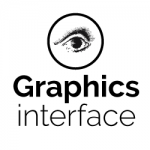Dr. Saul Greenberg is a researcher and educator in the field of human-computer interaction, and a Canadian Digital Media Pioneer. With the involvement of many students over his career, he has designed, implemented, and evaluated a wide spectrum of new digital media technologies; while novel and even radical when first introduced, many are now commonplace in everyday life. A key element of his work (what Saul calls “the secret sauce”) has been the development of toolkits that facilitate rapid prototyping of interactive systems that build on the new technologies. His many historic and deeply influential contributions to interactive technologies have helped shape the field of human-computer interaction.
Saul and his students have made important advances in tabletop and large displays, including both co-located interaction around the display, remote interaction through linked displays, and a mix of the two (called mixed presence groupware); video-based media spaces ranging from video-based always-on connections, to privacy management; social networks, where one can post a broad spectrum of media types for group consumption on both public and personal displays; distributed real-time groupware, ranging from casual interaction, techniques for maintaining awareness over distance, and creating spaces for both social and work activities; information visualization, including many visualizations of group activity (both past and present), and conducted what may have been the first usability study in this area; proxemic interactions that create devices and interaction techniques derived from the social science theory of proxemics (the use of social space); touch-based UIs that support single and multiple users by recognizing how parts of the body perform touch gestures; transparent displays to support collaboration using two-sided see-through displays; tangible user interfaces that use digital surrogates of people’s activities; domestic computing, including calendaring, location-dependent information appliances, and digital photo sharing; single display groupware that allows multiple users to share and interact with a single display; haptics, including how a haptic device can augment a touch-based tabletop interface; human-robot interaction, including applying social behaviour to robotic greetings, non-verbal interruption cues, and robotic wall displays; multimodal interaction, where users can collaborate over (mostly large) displays using a mix of touch and voice; and predictive user interfaces, ranging from adaptive menus to history systems.
While he is a computer scientist by training, his work with talented students typifies the cross-disciplinary aspects of Human Computer Interaction, Computer Supported Cooperative Work, and Ubiquitous Computing. His many research contributions are bound together by the common thread of situated interaction, which considers how computer technology fits within the fabric of people’s day-to-day activities. This includes how such technology blends naturally in the flow of people’s work practices, how people socialize and work together through technology, and how that technology fits within people’s physical environment.
Early on, Saul recognized that innovation in areas of digital media is often difficult because replication of emerging ideas is hindered by a lack of development tools. This forces researchers to concentrate most of their effort on the underlying technical plumbing required to make the media work, leaving little time to evolve novel design ideas to maturity. His research strategy overcomes this bottleneck. When exploring a new digital media form, his team first identifies problems or opportunities that uniquely leverage that medium. His group then designs and implements a particular design – a first prototype in the medium – to see how well it addresses a problem, but also to gain familiarity with the medium’s domain. This often comes at significant effort: because the technology often involves new computational media forms, significant technical obstacles may be encountered. For the next step, his team retrenches, and applies the knowledge learnt so far to the development of a toolkit for the medium: the goal being to accelerate the team’s ability to rapidly prototype within that area. When all goes well, what took months to do the first time might now be redone in hours. Using the toolkit, an explosion of prototype development follows, reflecting many variations of ideas for solutions. This in turn leads to a much deeper understanding of the design space for that medium, and to refinements to the toolkit itself. In this way his group has been able to deploy their knowledge as computer scientists to create custom development tools that allow them to work efficiently, rapidly, and productively. The remarkable productivity afforded by the toolkits has allowed his group to explore each new medium far more efficiently and richly than others are able to do without a toolkit.
There are four important themes evident in Saul’s work. Articulation of design-oriented social science theories serves as a requirements specification. For example, his team’s work on the nuances of awareness in distributed groupware has been used extensively by others as the theoretical foundation behind their work, while his team’s work on operationalizing proxemics theory enabled transforming social science theory into design practice. Innovative and seminal system designs based on observations of social phenomenon have informed his team’s work on many systems, including digital surfaces (large, interactive digital walls and tables). In turn, this led to the notion of mixed-presence groupware that lets multiple co-located groups work with each other across distance. The commercialized Teamrooms system, and later the Notification Collage and Community Bar systems, developed notions of room metaphors and of sidebars as a means to allow groups to stay aware of each other and easily move into real-time interaction. Toolkits enabling rapid prototyping of innovative systems, such as within the domains of groupware and ubiquitous appliances. For example, the Proximity Toolkit promotes rapid exploration of device ecologies, where software running on multiple devices leverages knowledge about their relative distance and orientation to each other. The Phidgets hardware/software toolkit lets designers rapidly build computer-controlled physical interfaces without having to deal with low-level device-specific details. The commercialized version of Phidgets is the de facto standard for teaching and prototyping new systems. The earlier Groupkit software was the first such system that allowed developers to rapidly create and experiment with distributed groupware. Refinement of evaluation methods has led to a plethora of methods to help researchers and developers rapidly evaluate the systems they are building, including discount usability methods specific to groupware, and contributions to the debate about the limits of usability evaluation as a testing method.
Biography
Dr. Greenberg is a Faculty Professor and Emeritus Professor in the Department of Computer Science at the University of Calgary. He earned a B.Sc. in Microbiology & Immunology in 1976 and a Diploma of Education in 1978 at McGill University. After teaching high school and outdoor education for two years, he switched into computer science and earned his M.Sc. in 1984 and his Ph.D. in 1989 at the University of Calgary. He is a prolific author with a high impact factor (H-index=84 as of 2018) and is listed amongst the top HCI researchers in various rankings. He has authored and edited several books and published many refereed articles. He held the NSERC/AITF/Smart Technologies Industrial Chair in Interactive Technologies at the University of Calgary for 10 years. He was elected to the prestigious ACM CHI Academy in 2005 for his overall contributions to the field of Human Computer Interaction. He received the Canadian Human Computer Communications Society Achievement Award in 2007. He was inducted as an ACM Fellow in 2012. He received a Lifetime Achievement Research Excellence Award from the University of Calgary and held a University Professorship, which is a distinguished University of Calgary award recognizing research excellence.
Saul has also worked outside of Academia. He runs his own consulting company, where his work includes software development and serving as an expert in intellectual property matters such as patent infringement cases.






